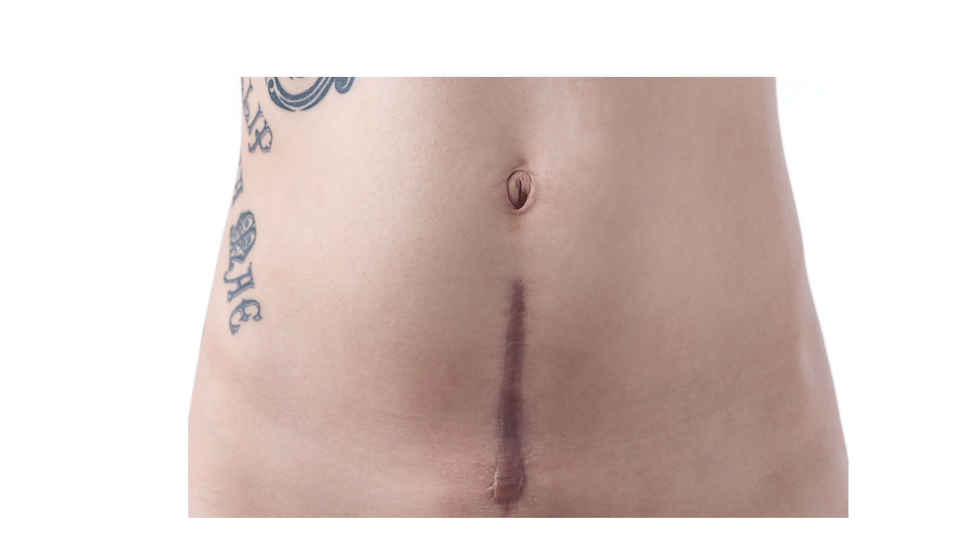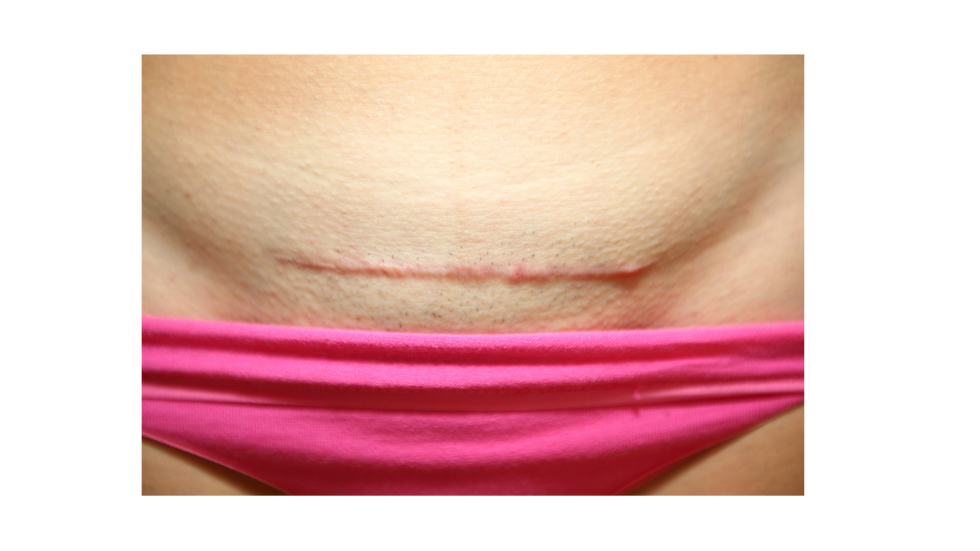
Listen. Scars are important. I know scars are important. They protect your body from imminent danger (such as bacteria) and future damage to the tissues below. They are formed from strong collagen fibers. BUT...what you may not know, is they are like an iceberg. Nice and neat on the surface, but a huge mound of gobbly-gook below. The collagen fibers can spread and cause a spiderweb-like mess all around the organs and soft tissues below.
Scar healing and the appearance of scars depends on several factors including:
Most scars are not an issue. However, the type of scar and location of the scar may lead to pain, discomfort, bladder issues, bowel issues, and a host of other problems or dysfunctions. As a pelvic floor therapist, I see many scars after bowel or abdominal surgeries, c-sections and vaginal tearing during childbirth. What you see on the surface of the scar is just the tip of the iceberg. The scarring or collagen overgrowth continues down deep into the surrounding tissues.
Let's take that c-section for example. The c-section scar goes not only through abdominal muscle and fascia, but also deep into the uterus which sits right behind the bladder and in front of some of the bowel. Scar adhesions (where the scar is stuck and can’t move as well) can cause restrictions around the bladder and even the bowel or rectum. These can cause urinary or bowel urgency, frequency or incontinence, bowel constipation or just good old fashioned pain.
But what can you do about it? And this is my hill I will die on! Treatments are easy. Treatments are readily available. Treatments such as massage or mobilization have been PROVEN to work (see my social media for study @embodyPTmedia). Treatments can reduce a scar’s size or appearance, but more importantly reduce adhesion. However, most doctors and health care providers never tell you about treatments! Or at least not until a problem develops.
Scar massage is one of these treatments. It's easy, cheap, but effective. Scar massage can help prevent a scar from deep adhesion and give the scar better mobility. You don’t want to start most scar treatments until the wound is closed, the sutures (if applicable) have been removed, the scabs have fallen off naturally and there are no longer any open areas.
Here are some steps for scar massage. You want to use a little bit of lotion to help with the friction.

Put the pads of your pointer and middle finger just above the scar (if up and down scar then will be just left of the scar)
Massage in small circles -10 circles in each direction
Move your fingers to the next spot along the scar (still just above or left of the scar)
Repeat this for the length of the scar
Next, move to below (or to the right of the scar)the scar and perform 10 circles each direction for the length of the scar
After above and below, go directly onto the scar and perform 10 circles each direction for the length of the scar
To finish, take the pads of all your fingers to the top (or left) of the scar and just gently pull away from the scar
Switch and take the pads of all your fingers to the bottom (or right) of the scar and just gently pull the opposite direction
Do this for 5-8 minutes every day!
Help me spread the word!! C-section and abdominal scars don't have to be painful or cause bowel or bladder problems!

Comments